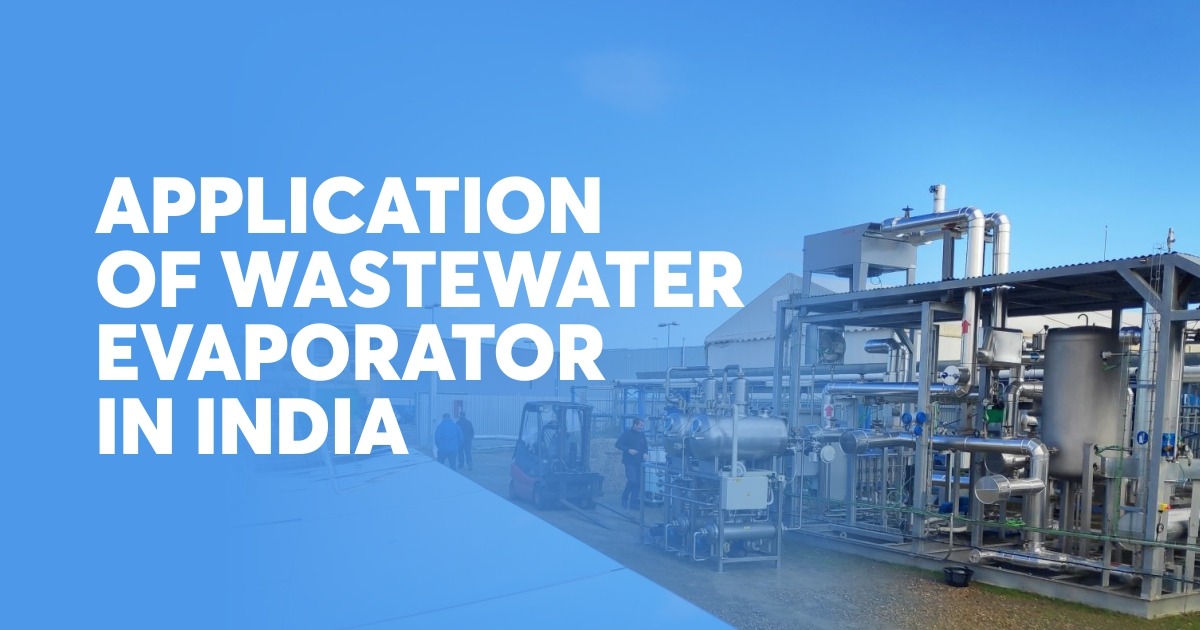Network for Success: SAIT Alumni Association
In an era where professional success hinges not only on knowledge and skills but also on the strength of one's network, the importance of alumni...

Trash disposal is a global issue, and with international environmental standards, trade restrictions, and national controlling laws in place, sustainable growth has become a prerequisite. To process garbage, modern facilities must first separate liquids from solid waste. This is often accomplished by a two-stage procedure in which filtration methods are used to eliminate the insoluble solid waste first. A concentrate of the dissolved solids is left at the bottom after the soluble waste is selectively removed by displacing the dissolved material or thermally evaporating the liquid. The liquid that has evaporated is then salvaged for further use.

In terms of heat generation sources, which are limited in number, thermal evaporators continue to be resource-intensive. To conserve heat, multi-stage evaporation is typically chosen. This raises the temperature of the following stage using the steam produced in the first stage. This lowers the process's overall energy needs from 15 kW/m3 to 1.5 kW/m3, a reduction of up to 10 times. When the liquid evaporates in each consecutive step, the vessel's overall pressure falls, allowing for easier evaporation at much lower temperatures, such as 75 to 80 degrees Celsius, which reduces the need to burn additional fuel for heat generation. Similarly, the heat produced by other activities can also be used.
The Wastewater Evaporator India (WHE) systems also benefit from the system's overall compactness, thanks to the absence of pressure vessels and high-maintenance components like steam boilers. Due to the setup's integration with existing plant systems, the overall capital and operational and maintenance costs are dramatically reduced. Because the system is simpler, there is less need for specialized labor to operate high-pressure vessels and boilers. Descaling, which is typically a risk with steam-run installations, is eliminated. Using the heat produced by flue gases, WHE systems direct it to the pipes in the evaporation chamber. By doing this, the need for additional heating sources or fuel-burning heaters is eliminated, saving money.
Energy Efficient: Wastewater evaporators operate on a 1:1 ratio, meaning that the energy required to extract water equals that amount. Using numerous effects, such as repurposing steam from one activity for another, can enhance this ratio.

Zero Liquid Discharge: Federal, state, and municipal governments continually update the rules that control how industrial wastewater is discharged. To exceed municipal and federal standards, wastewater evaporators can produce zero discharge.
Total Dissolved Solids (TDS): TDS is the milligrams or parts per million pollutants in a liter of water. A wastewater evaporator's output might be as low as 2 mg/L or less than 10 mg/L.
Cost-Effective: Wastewater evaporators are significantly more effective and economical than chemical precipitation systems.

Flexibility: Every sector of the economy and wastewater site has different problems. What might be applicable in one place might not be in another. Wastewater evaporators are programmable to handle various impurities and may adapt to any environment.
Amount of Waste: The wastewater evaporator's ability to reduce the volume of trash by eliminating the moisture from the materials is its most important advantage. The amount of space available for garbage disposal is one of the problems that waste management operations face. Waste is significantly reduced in bulk when water is removed from it.

Inclusion:
A wastewater evaporation system's independence or integration with an existing system adds to its adaptability. Its flexibility and ability to be integrated into current systems reduce costs and enhance the overall wastewater disposal process.
Natural Evaporation: For many years, dangerous items have been left behind as water in ponds evaporates due to natural evaporation. Although it is environmentally friendly, the process is time-consuming and pollutes the environment.

Sewage Discharge: People dump unclean water into streams and rivers for many years without considering the effects. Regulations have been implemented to strictly limit wastewater discharge into sewers, and public waters as environmental concerns have developed.

Removal to be Dumped: Removing waste from industrial processes can still be done this way. Sending garbage to a landfill or other authorised disposal location is all necessary. The technique is expensive and misses that water makes up over 70% of waste, which might be removed to reduce waste volume.
Filtration: As technology advanced, increasingly sophisticated filters were created to capture even the smallest pollutants. Even though it is now a practical method for cleaning water, it is not always dependable and necessitates close supervision, which drives up personnel expenses.

Reverse osmosis (RO): One of the earliest techniques for purifying water of impurities was reverse osmosis. Wastewater is forced through a semi-permeable cloth during the procedure. Little particles can flow through, whereas massive particles are trapped. What to do with the water left over after being unable to flow through the membrane is the issue with the RO process.
Chemicals: One of the first ways utilised as a treatment method, the use of chemicals to treat wastewater dates back more than 70 years. Chemical treatment technologies have been less effective as clean water laws have increased because the process can't safely remove enough impurities and leaves residual chemicals.
Evaporation: Evaporating wastewater is easy, effective, and economical. It is simple to install and ready for use right away. Engineers from the manufacturer tailor wastewater evaporators to suit a particular application using samples of a company's wastewater. Regulations governing clean water are what determine the need for wastewater evaporators. The Federal Water Pollution Control Act, which became the first Clean Water Act (CWA) in 1972, was to be overseen by the Environmental Protection Agency (EPA).
The CWA aims to stop towns and factories from discharging untreated water. Over time, the EPA's purview and jurisdiction have expanded to encompass wastewater locations outside cities and factories. It now includes logging, paper production, agriculture, and fertilisers.
Overall, the use of a wastewater evaporator in India can bring many benefits, including reduced energy costs, zero liquid discharge, and the ability to handle various impurities. Additionally, it can significantly reduce the amount of waste generated by removing moisture from materials. Compared to other methods like natural evaporation, sewage discharge, removal to be dumped, filtration, reverse osmosis, and chemical treatment, evaporating wastewater is a more effective, economical, and environmentally friendly option.
In conclusion, the use of a wastewater evaporator in India can help address the growing problem of trash disposal and meet the increasing demand for sustainable solutions. By adopting this technology, industries and municipalities can efficiently manage their wastewater and reduce their environmental impact while also saving costs in the long run.

In an era where professional success hinges not only on knowledge and skills but also on the strength of one's network, the importance of alumni...

In an era where the landscape of education and employment is rapidly evolving, the importance of practical experience cannot be overstated.

In the pursuit of academic excellence, Sri Aurobindo Institute of Technology (SAIT) has carved out a distinctive niche by recognizing the pivotal...